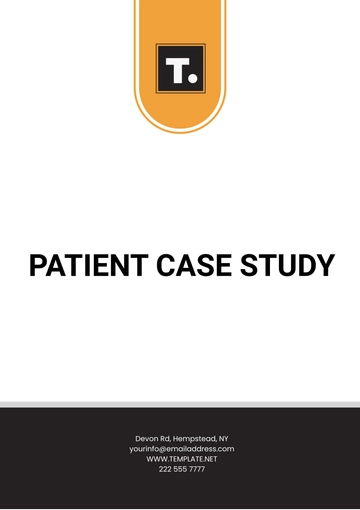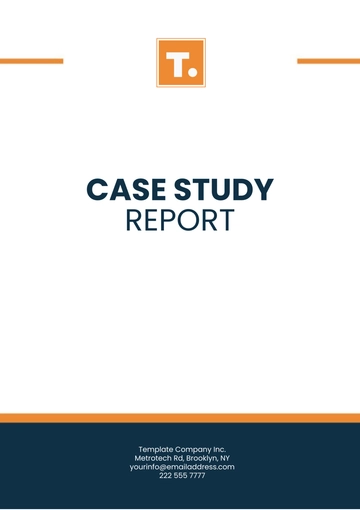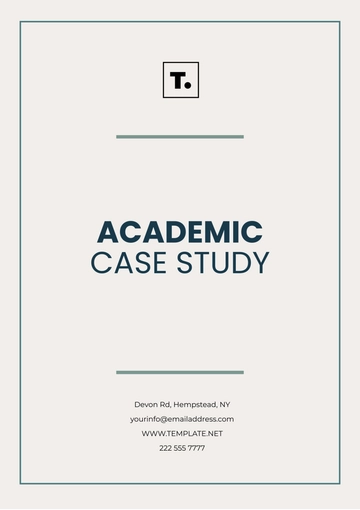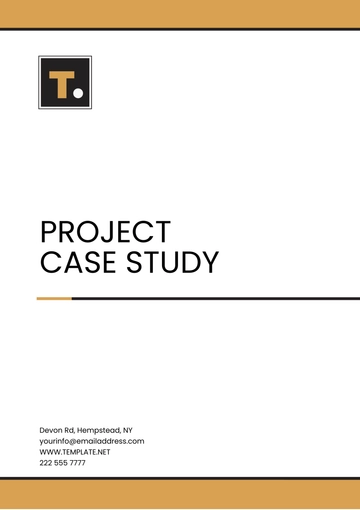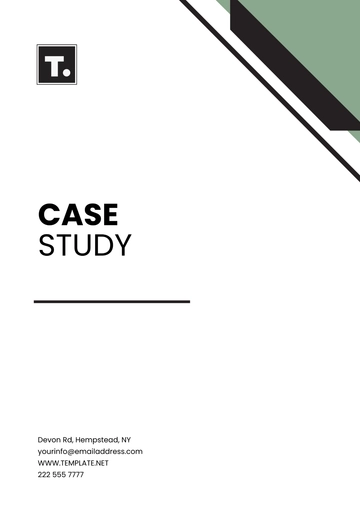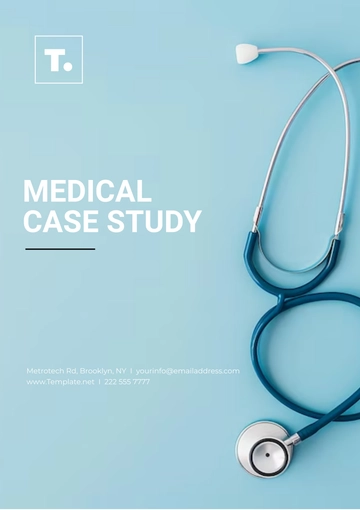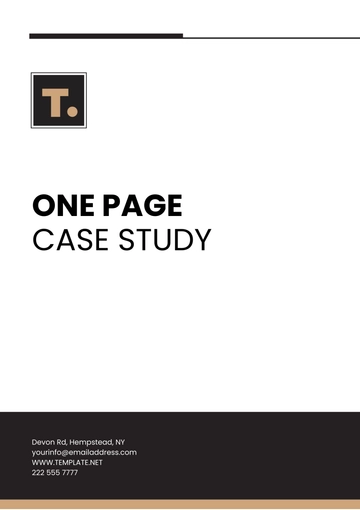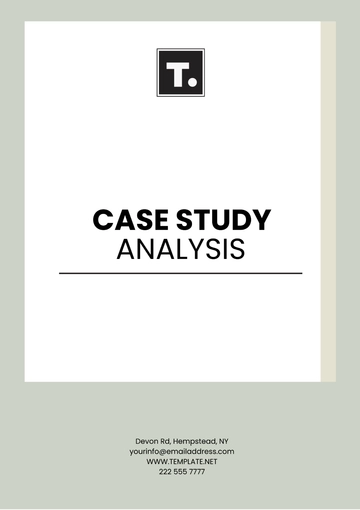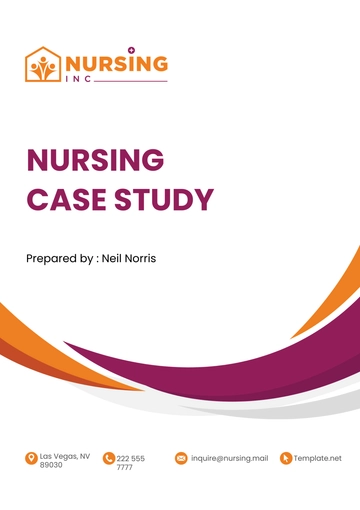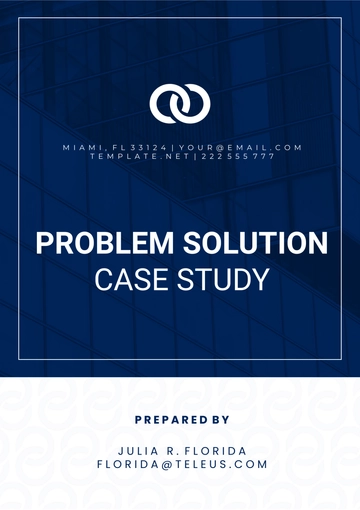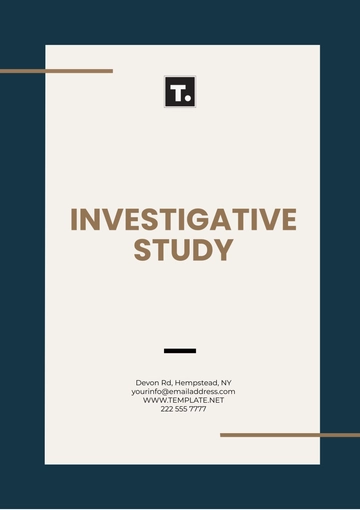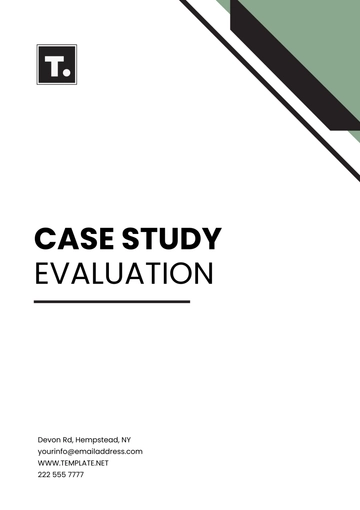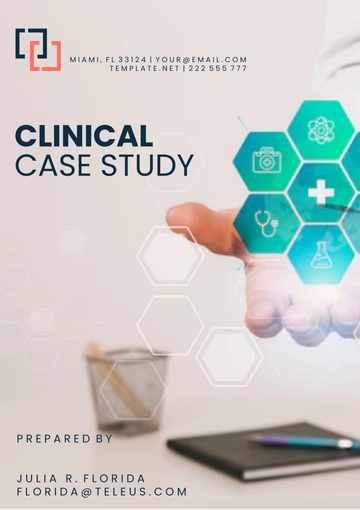Free Microbiology Case Study

I. Introduction
In this section, provide an overview of the case study, including background information on the outbreak, its significance, and the objectives of the investigation.
[Your Company Name] has been called upon to investigate a recent outbreak of E. coli in [City/Town]. This outbreak has raised concerns due to its rapid spread and potential impacts on public health. The primary objective of this case study is to analyze the epidemiology of the outbreak, identify the source of contamination, and recommend control measures to contain the spread of the microorganism.
II. Background Information
In this section, provide detailed background information on E. coli, its characteristics, transmission routes, and previous outbreaks if applicable.
E. coli is a bacterium commonly found in the intestines of humans and animals. Certain strains of E. coli can cause severe foodborne illness. It is known to be transmitted through contaminated food and water, as well as through contact with infected individuals. Previous outbreaks of E. coli have been documented in various parts of the world, often associated with the consumption of contaminated food products such as undercooked ground beef or raw vegetables.
III. Epidemiological Investigation
A. Case Definition
Define the criteria used to identify cases of E. coli infection in this outbreak.
Confirmed Case: Laboratory confirmation of E. coli infection in a patient.
Probable Case: Clinical symptoms consistent with E. coli infection without laboratory confirmation.
Suspected Case: Individuals with symptoms suggestive of E. coli infection under investigation.
B. Case Identification
Describe the methods used to identify and confirm cases of E. coli infection.
Clinical Surveillance: Healthcare providers report suspected cases to the public health department.
Laboratory Testing: Stool samples collected from suspected cases are tested for the presence of E. coli.
Contact Tracing: Interviews conducted with confirmed cases to identify potential sources of infection and contacts.
C. Epidemiological Analysis
Present the findings of the epidemiological analysis, including demographic characteristics of cases, time and place distribution, and potential risk factors for infection.
Demographic Characteristics: Predominantly affecting children under the age of 10.
Temporal Analysis: Increase in cases reported following a community event.
Spatial Analysis: Cases clustered in neighborhoods served by a particular grocery store.
Risk Factors: Consumption of unpasteurized dairy products was identified as a common risk factor among cases.
IV. Environmental Investigation
A. Site Visit
Detail the site visit conducted to investigate potential sources of contamination.
Location Description: The grocery store is suspected of selling contaminated food products.
Observations: Improper storage of perishable items and inadequate handwashing facilities were observed.
B. Sample Collection and Analysis
Explain the methods used to collect environmental samples and analyze them for the presence of E. coli.
Sample Types: Samples collected from food items, food preparation surfaces, and employee hands.
Sampling Techniques: Random sampling was conducted throughout the store.
Laboratory Analysis: Samples tested for the presence of E. coli using standard microbiological methods.
C. Findings
Present the findings of the environmental investigation, including any sources of contamination identified.
Contaminated Sources: E. coli detected in samples from raw milk and cheese sold at the store.
Factors Contributing to Contamination: Poor hygiene practices among store employees were identified as a contributing factor.
V. Control Measures
Propose control measures to contain the outbreak and prevent further spread of E. coli.
Public Health Interventions: Issuance of public health advisories urging consumers to avoid consuming unpasteurized dairy products.
Environmental Remediation: Temporary closure of the store for thorough cleaning and sanitation.
Communication Strategies: Public education campaigns on safe food handling practices and the risks associated with consuming unpasteurized dairy products.
VI. Conclusion
Summarize the key findings of the investigation and highlight recommendations for controlling the outbreak of E. coli in [City/Town].
Dr. [Your Name], [Your Title] at the [Your Company Name], conducted this investigation and prepared this case study to provide insights into the epidemiology and environmental factors contributing to the E. coli outbreak in [City/Town].
Prepared by:
[Your Name]
[Your Title]
Contact Details:
[Your Company Email]
[Your Company Number]
- 100% Customizable, free editor
- Access 1 Million+ Templates, photo’s & graphics
- Download or share as a template
- Click and replace photos, graphics, text, backgrounds
- Resize, crop, AI write & more
- Access advanced editor
Discover the Microbiology Case Study Template on Template.net, your ultimate solution for crafting professional-grade analyses. This editable and customizable gem is tailored to meet your exacting standards. Dive deep into your research with ease, knowing every detail is within reach. Seamlessly edit in our Ai Editor Tool, empowering you to showcase your expertise effortlessly.
